
3S is the abbreviation for “Seiwa Scholars Society,” which consists of the past and current Inamori Research Grant recipients. The 3S has evolved since 1997 with the hope that the interactions among the various specialties of the 3S members can lead to the further development of the research of their own. In the series “Visiting 3S Researchers,” we interview researchers in 3S who are very active in a variety of fields. The fifth interview is with Dr. Mareki Honma (2003 Inamori Research Grant Recipient) from National Astronomical Observatory of Japan.
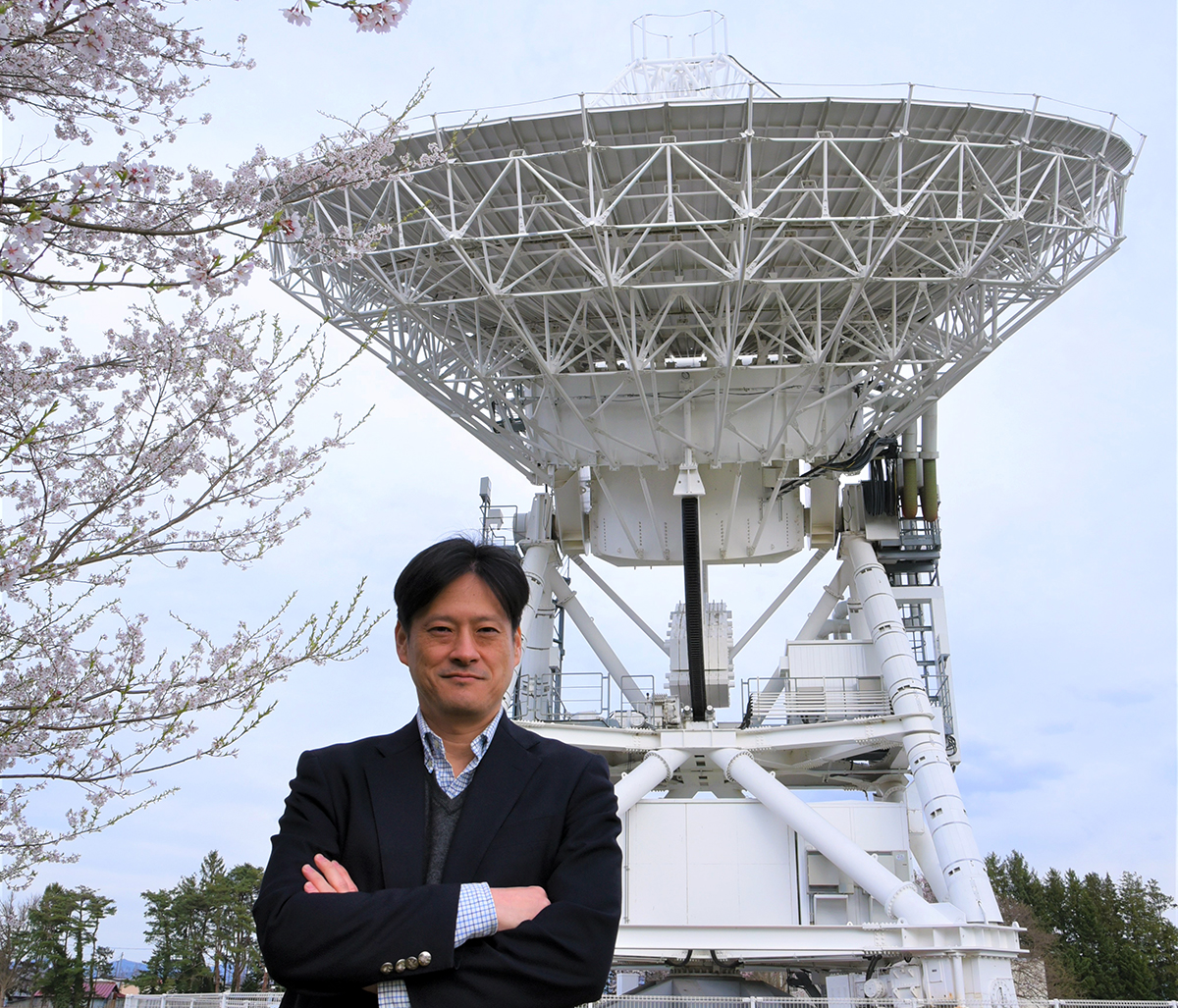
On April 10, 2019, breaking news made headlines around the world—the first image of a black hole was captured by an international collaboration project using the Event Horizon Telescope (EHT). The Japanese team played a critical role in this astronomical project, with Professor Mareki Honma of the National Astronomical Observatory of Japan (NAOJ) taking the lead. We were fortunate enough to speak with Dr. Honma, who briefed us on how they captured the image of a black hole, the scientific significance of this accomplishment, and the discipline of radio astronomy, which made this great success possible.
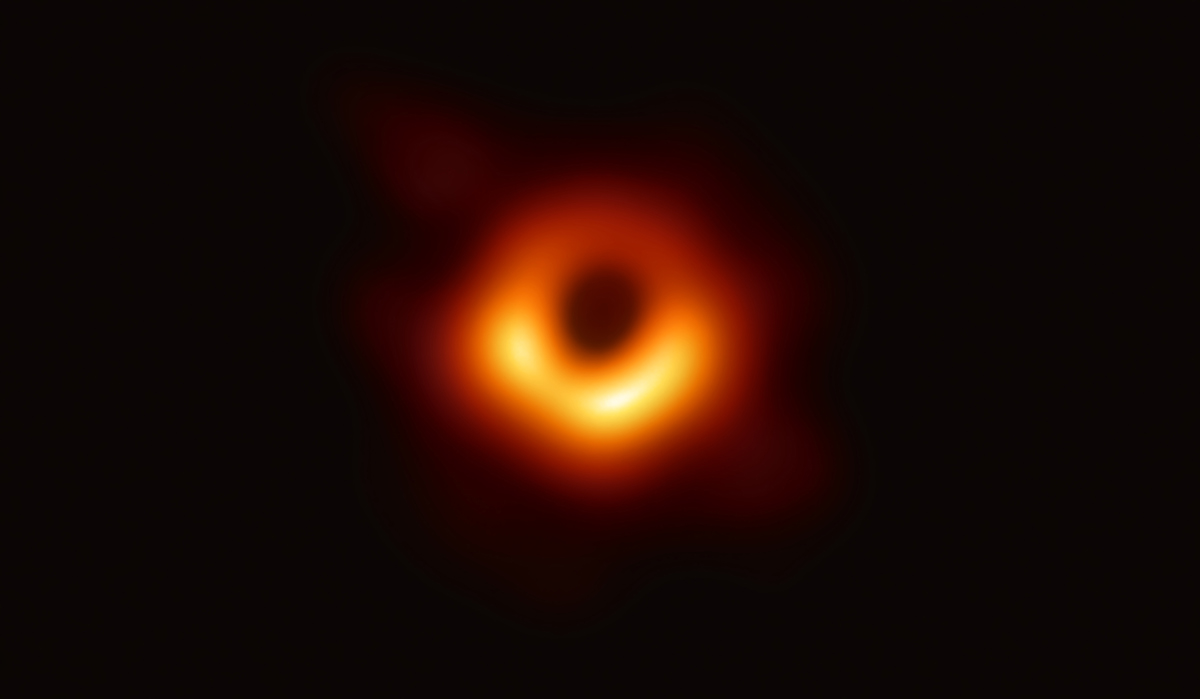
── In April 2019, it was reported that an image of a black hole at the center of the elliptical galaxy Messier 87 (M87) was captured, which attracted a great deal of attention. The image of a circular shape with a “black hole” at its center was stunning. I hear that a group of Japanese researchers led by you were instrumental in this project using EHT. What emotions did this achievement evoke in you?
Dr. Honma (title omitted below) I will never forget how much I was moved when I first saw the image of a black hole displayed on the computer screen. Actually, the observations were made in 2017, but we all agreed not to touch the data until all the necessary preparations for analysis were made, and each team from the U.S., Japan, Europe, and Asia proceeded with preparations separately. We had to do that because we needed to verify the correctness of the results by determining if multiple teams reached the same conclusion when analyzing identical data using different methods. As soon as our self-imposed wait of more than a year was lifted, members of the Japanese team gathered together to start the analysis. Thanks partly to our extensive preparations, we obtained the desired image in about 30 minutes, without any problems. Yes, what we saw on the screen was exactly the image we had wanted to see. At the sight of the image, we all rejoiced together. It was truly a gratifying moment.
── Wow! It is amazing that you focused on preparations for analysis without even taking a look at the data. Did other teams obtain the same result?
Honma Yes, we compared the results to find they were almost identical. A few months after the data was opened, all teams met in the U.S. to swap their findings at once. That’s when we came to know that we had the correct results. Then, we made an “average” image of the results gained using three different methods and released the image to the public.

── I have heard that a black hole is just one of your many research objects. Could you walk me through the entire scope of your research?
Honma Broadly speaking, the field of my research is radio astronomy. Normally, you might associate astronomy with the act of observing the universe by (visible) light, but radio astronomers use radio waves instead of light to see the universe, allowing us to see the universe through a very different “lens.” We want to see different aspects of the universe, something different from what most people associate with the term “astronomy,” like twinkling stars and galaxies. You could say that radio astronomy is a kind of rather unusual subfield of astronomy.
── I see. I cannot imagine a universe made visible by radio waves.
Honma Radio astronomers use a radio telescope, which is a massive parabolic antenna several dozens of meters in diameter, to catch radio waves from outer space for observations. My specialty in the field is called “Very Long Baseline Interferometry,” or VLBI for short. Radio telescopes are typically linked together and used that way. Each observatory is several thousands or tens of thousands of kilometers away from each other, but they form one gigantic telescope when radio waves observed by each are synthesized to generate astonishing visual power. VLBI is the technology that makes this possible. We used this technique to capture the image of a black hole. For the EHT project, we synthesized data gathered by radio telescopes at eight locations around the world, including the U.S., Chile in South America, and Europe, to capture the image of a black hole, at which point the visual power was three million. With vision of three million, you can see down to three millionth of the size of the C marks that people with visual acuity of 1.0 can see. Arguably it is the highest level of vision that humankind has ever achieved.
── Three million vision! It’s also a completely unimaginable value.
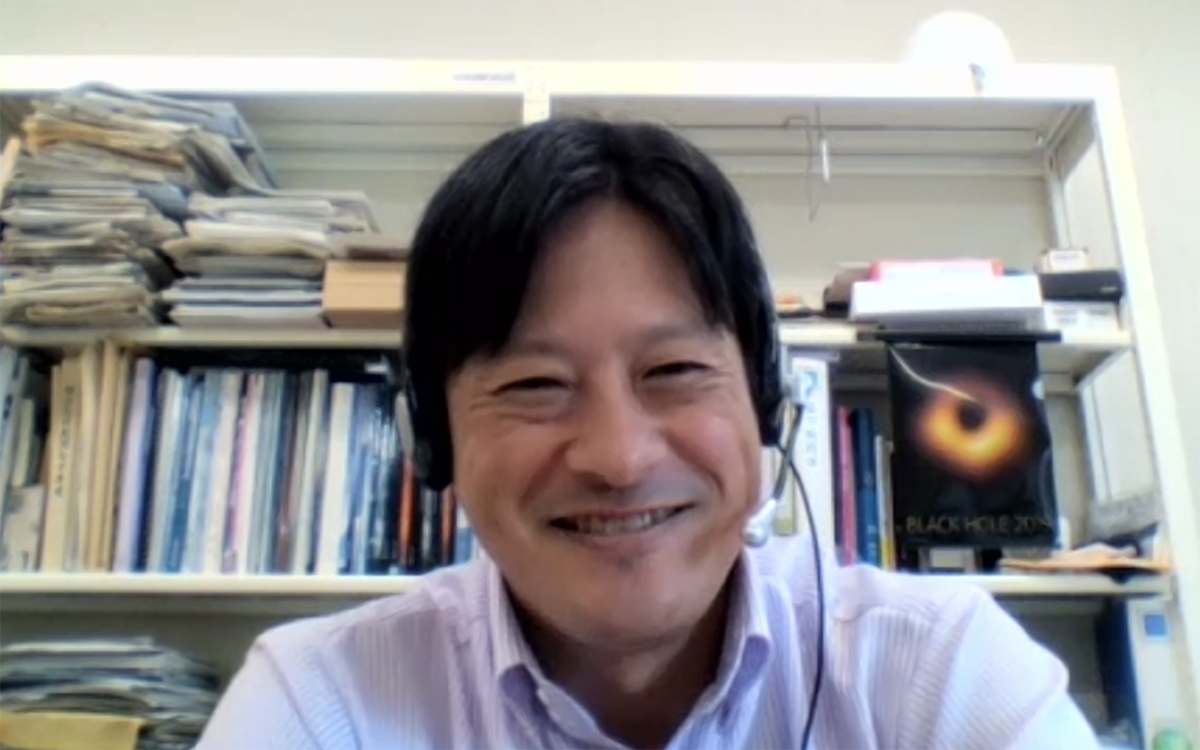
── Other than a black hole, what kind of observations are you making with VLBI?
Honma My laboratory is at the NAOJ Mizusawa VLBI Observatory in Iwate Prefecture. There, we use VLBI technology to observe the Milky Way Galaxy, to which our solar system belongs. Our goal is to reveal its 3D structure. For the VLBI Exploration of Radio Astrometry (VERA) Project, as it is called, we synthesize observational data from four radio telescopes at four stations in Japan, namely, Mizusawa and Iriki in Kagoshima Prefecture, Ogasawara in Tokyo Prefecture, and Ishigaki-jima in Okinawa Prefecture. For your information, we achieved 100,000 vision for this project.
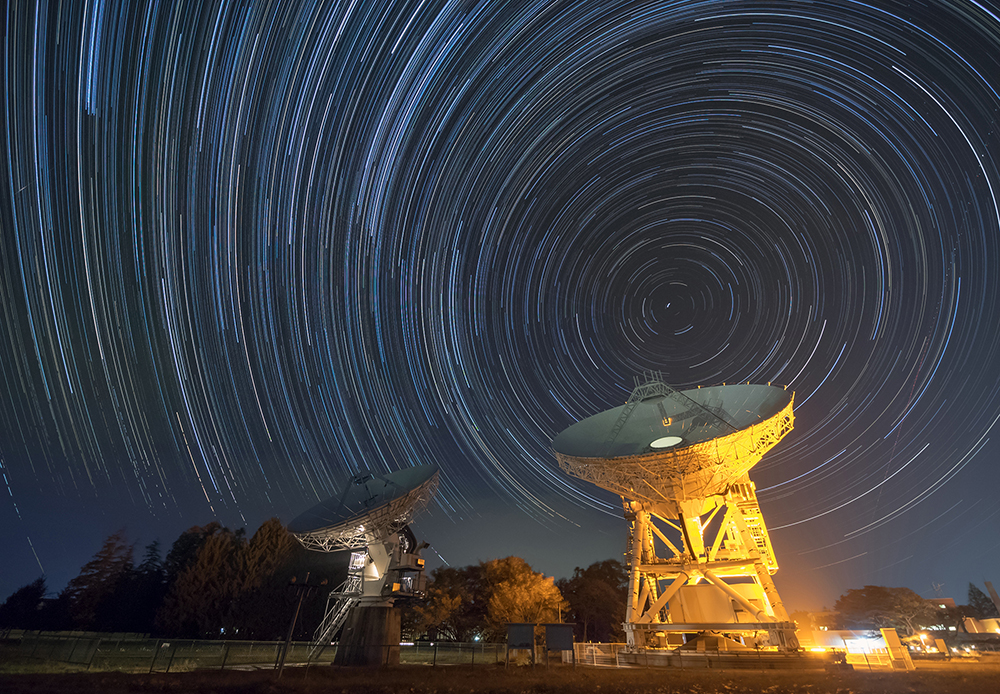
── Could you tell me what observations you have made and what you discovered about the Milky Way Galaxy in the VERA Project?
Honma Through cooperation with research groups in the U.S. and elsewhere, we have successfully measured the distances and motion velocities of some 200 stars within the Milky Way Galaxy. Those findings have given us a clearer picture of what our Galaxy (Milky Way Galaxy) looks like. Another finding is that our Galaxy is rotating faster than previously believed. This suggests that it is heavier than previously predicted; that is, it contains more dark matter*1 than expected. All these discoveries were made possible thanks to the VERA Project.
── No one knows what dark matter really is yet. Do you think that the VERA Project will be able to change that?
Honma The search for dark matter is now in the hands of researchers of elementary particles, rather than astronomers. When it is eventually discovered, information on galaxies will be the key to understanding its properties. In this sense, observations by the VERA Project have something to do with research into dark matter.
── So, you are currently working on two major projects: EHT to capture the image of a black hole and VERA to observe the Milky Way Galaxy. How did you get involved in these two at the same time?
Honma When I was at graduate school, I was researching the Milky Way Galaxy because I was intrigued by dark matter. As I was set to complete my doctoral course, the VERA Project was about to start, and so in 1999, upon the receipt of my doctorate, I joined the VERA Project from its preparatory stage. At the time, we didn’t have radio telescopes for VERA observations. In fact, I was a member of the team for evaluating the performance of telescopes that we would use.
It was not until 2007 that our uphill struggle yielded its first fruits, namely, a success in measuring the distance to the furthest celestial body known then. I was also in a position to lead the VERA Project, and I thought, “Now I’m at the real starting line.” But then again, in the following year of 2008, I got to know that an American group made significant achievements regarding a black hole by using VLBI technology. They successfully observed radio waves from a black hole called Sagittarius A*, (pronounced A-Star), at the center of the Milky Way Galaxy. I thought that they would fairly quickly capture an image of a black hole and so told them that they could count us in. We told them what contributions we could make to that objective, and we became a part of the precursor of the current EHT Project.
── I see. It took about 10 years for you to obtain the image after you first set about seeking to capture the shot of a black hole. What exactly did the Japanese team do for the EHT Project?
Honma To begin with, Japan had a 10-m radio telescope in Chile, and we thought we could use it to make substantial contributions to the EHT Project. Later, a new radio telescope with 66 antennas was built in Chile as a joint project of many countries, called ALMA telescope*2 , and it was used to observe the image of a black hole. But then again, because Japan was heavily involved in the construction and operation of ALMA, the EHT Japan team had a role to fulfill in utilizing ALMA. But that alone was not enough to make Japan’s presence felt within the project, and we began thinking about what else we could and should do, until we realized that we could independently develop software that would analyze data to obtain an image of a black hole. After the observations in 2017, four groups used three different imaging methods to analyze the data simultaneously, and one of them was the one that we developed. As all groups had an almost identical image, it was proven to be correct. By developing software that helped to bring about the outcome, we made intrinsic contributions, and we are proud of that.
── After the EHT Project visualized a black hole, researchers who verified the existence of a black hole in theory and observation received the 2020 Nobel Prize in Physics. I’m wondering in which direction your team’s black hole research will be heading.
Honma Other than the M87 black hole, whose image we have gained, we have another black hole that we can visualize from the data from the 2017 observations. It is Sagittarius A*, which I mentioned before. Because radio waves from this black hole fluctuate in a much shorter time, say, every several minutes, compared to M87, its analysis is quite challenging. So much so that we have yet to complete an analysis of its data four years after the observation. If we manage to capture its image, we would have images of two different black holes, which should allow us to see the characteristics of each black hole and then deepen our understanding of their properties. Also, it was observed that jets, streams of energy and hot matter, were flying outward from M87’s black hole, but the photo of M87 taken this time failed to capture the base of these jets. If we captured the jet base by the next observations of M87, we might be able to understand the mechanism at play. So, it remains to be seen if we will be able to shoot its photo next time.
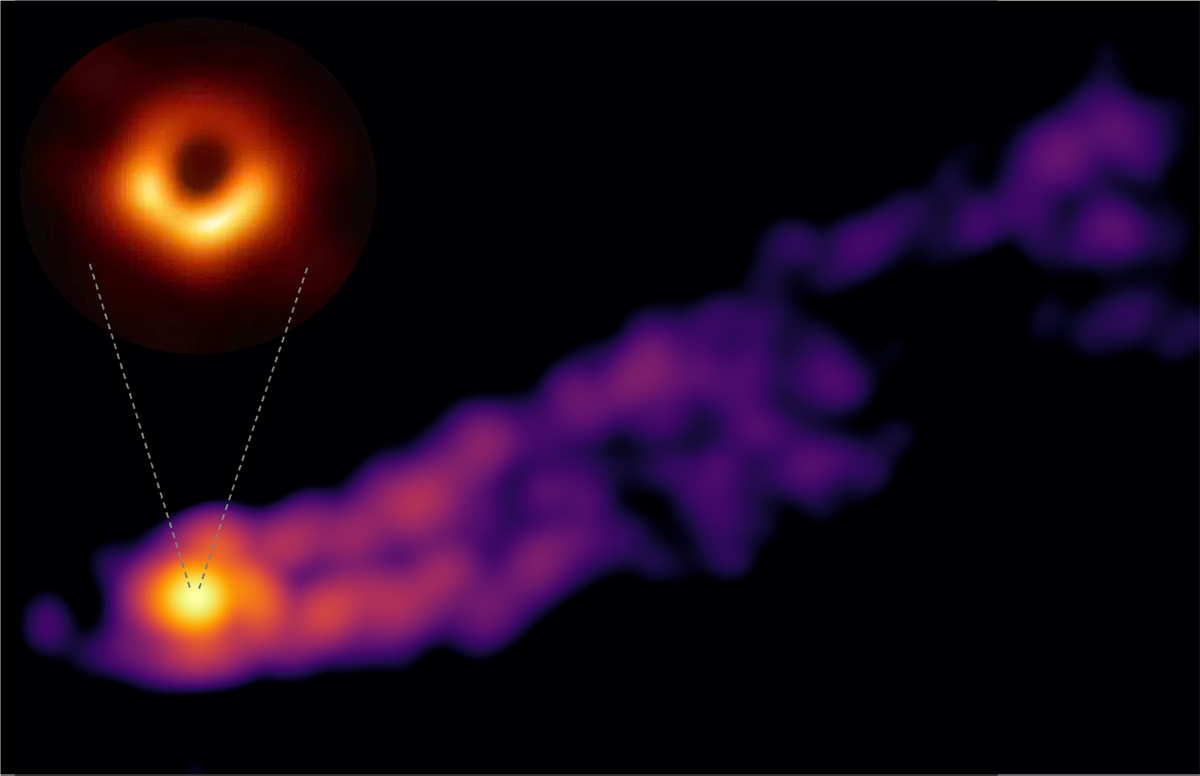
── Could you tell me what made you seek a career as an astronomer and a radio astronomer?
Honma It was not that I wanted to be an astronomer as a child, but I did like to watch stars. So, I chose to major in astronomy for higher education. Fortunately, I was able to get in, and I guess, in retrospect, it was a major turning point in my life. Then I became a radio astronomy student because it was my academic advisor’s specialty. As I learned more about it, however, I found myself delving into radio astronomy with gusto.
── What do you think is the biggest pull, or appeal, of radio astronomy?
Honma It’s that you can see the universe very differently from what you usually see with your eyes. Also, I must say VLBI technology is a rather fickle technology. I mean, you can see a black hole with it, but you cannot see the sun. So, if you don’t use it properly, it is of absolutely no use haha. Anyways, I’m so attracted to radio astronomy because it gives me extremely strong eyesight that enables me to see an unknown world no one has ever seen.
── You often appear on television and radio shows and YouTube. It seems to me that you use plain language to talk about science on those occasions. Are you doing so very consciously?
Honma Right. I always want to be a promoter of science, and I try not to decline such offers. First of all, I want people to know about my research field, but I also feel obliged to share my research outcomes with society to give back, as NAOJ is a research facility run with tax money. To put it another way, I am allowed to use tax money to seek my research interests all because of the people who have some interest in what I’m doing. So, I think I must keep sending updates whenever I can if we wish to continue with research. In that context, I was delighted to know that our announcement of the first image of a black hole in 2019 attracted so much public attention, a testimony to the fact that many persons acknowledged the significance of seeing a black hole for the first time.
── The other day, I heard you answer questions from children in a popular radio program by NHK (Japan Broadcasting Corporation). You sounded so caring to inquisitive kids on the other line.
Honma Children often ask questions more insightful than adult scientists, which is tremendously exciting. Having done science for many years, one can easily develop a “bias called common wisdom” for better or for worse and stop trying, saying to oneself, “This is simply impossible.” Children do not have such a bias, and so ask what adults normally give up doing and don’t even bother thinking about. Those questions always remind me of one thing: That’s where scientists should be reaching for. That’s why I always appreciate such opportunities.
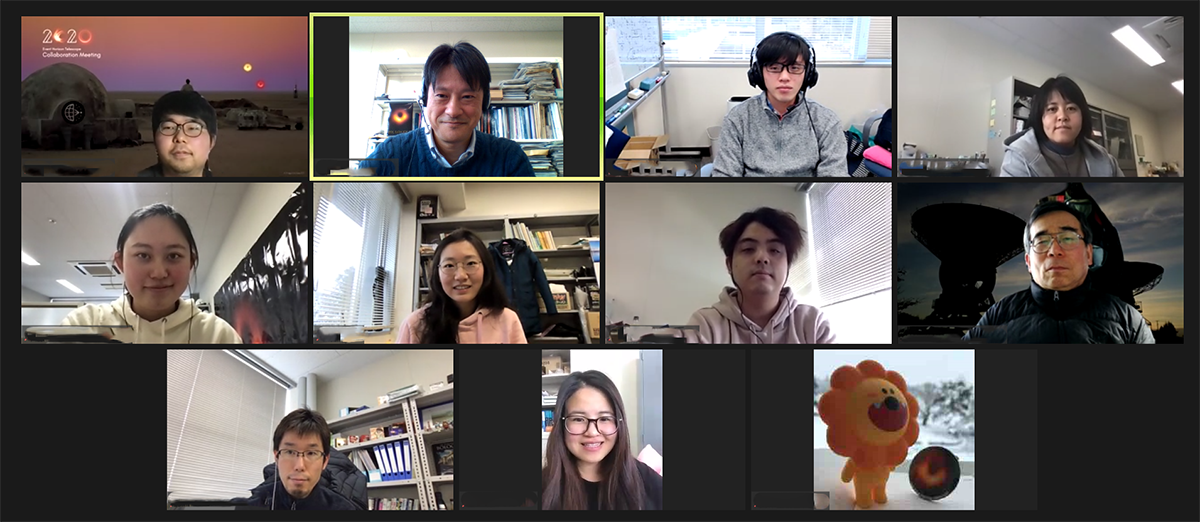
── Listening to your story, it struck me that your research takes a lot of time and patience. I’m curious what you do to refresh yourself. Is there anything that you regularly do?
Honma For me, the best way to refresh myself is to sleep. When something goes wrong, I go to sleep and wake up to find myself full of energy. Also, when I get lost in thought in my futon bedding, I often come across ideas that I didn’t expect, which I try to develop. But I have to admit many such ideas are useless, haha.
── You now live in Mizusawa, Iwate Prefecture, where the Mizusawa VLBI Observatory is. I see Hoshigaoka-cho (”starry hill town”) in its address, and it sounds like the place is endowed with nature. Could you tell me what it is like to live in such a place?
Honma I live alone there, away from my family, but I try to find joy as much as possible. I often tool around to enjoy the beautiful scenery. I also love eating delicious local specialties, such as fish caught off Sanriku Coast and Maesawa Beef. We’re in early summer, which is the season of sea urchin. Here, they sell this delicacy in a milk bottle, and you can make two servings of “sea urchin bowls” with it. As for sake, I didn’t have a drinking habit, but sake brewed here is so good as Iwate is a rich rice-producing area that I now enjoy drinking sake from various breweries. It’s been seven years since I moved to Mizusawa. Before that, I had long lived in downtown Kanagawa Prefecture, and I still find life in a rural community charming every day.
── Finally, if you have a big goal or aspirations that you wish to achieve as a researcher, please tell me.
Honma That would be to catch radio waves sent from extra-terrestrials. I don’t think the radio telescopes that we have now are powerful enough to do so. If there is extra-terrestrial life on a not too distant planet and they use radio waves like ours, we may at least acknowledge their existence several decades from now. I’m serious! Haha.
── Even aliens! Now I think I realize the expanse of the world that we can know using radio waves. Thank you very much for answering our questions.
*1. An invisible, unidentified matter thought to be widely distributed throughout the universe. It is believed to be present in an amount several times larger than that of visible matter. Because galaxies rotate, stars in a galaxy are subject to outward centrifugal force, but it clusters together without being dispersed as celestial bodies exert gravitational pulls on each other. However, it is known that the gravity of celestial bodies that we can see is not powerful enough to reach equilibrium with the centrifugal force of the galaxy; it is thus hypothesized that some invisible, dark matter with its own gravitational pull exists.
*2. A giant radio telescope at an altitude of 5,000 meters in Chile, constructed to unveil various mysteries of the universe, such as the mechanism of planetary formation and the probability of extra-terrestrials. Beginning in 2011, ALMA, with its 66 antennas, is operated through a partnership among 22 countries and regions, including Japan.
| This Book |
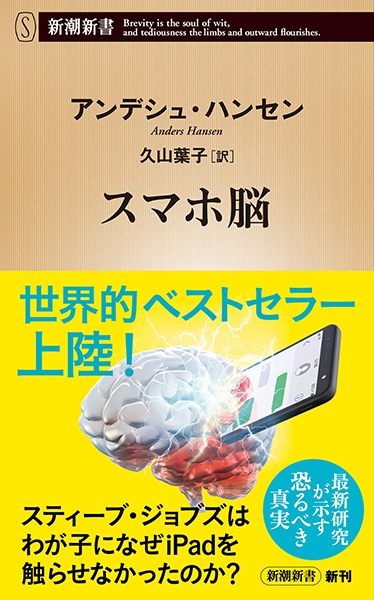 Skärmhjärnan (Japanese translation entitled: Smahono (smartphone brain)) by Anders Hansen, translated by Yoko Kuyama I learned that various functions of the brain have been acquired through human evolution, which was my “scales fall from my eyes” experience. I do struggle with not knowing what to do with my children, who are kind of addicted to their smartphones. This book explains how the human brain reacts to a smartphone from a scientific perspective, which gave me plenty of food for thought. |
|---|---|
| Unchosen Path |
Beethoven researcher? Honestly, I adore classical music more than the universe. While at university, I was a member of an orchestra. There was nothing in particular that I wanted to be other than a researcher, but if I could put food on the table researching Ludwig van Beethoven, that would be wonderful, although I haven’t given any thought to it before. |
Mareki Honma
Professor, Mizusawa VLBI Observatory, National Astronomical Observatory of Japan (NAOJ) (2015 to present). Born in Texas, the U.S., in 1971 and raised in Kanagawa Prefecture, Japan. After receiving his doctorate in science from the Department of Astronomy, Graduate School of Science, The University of Tokyo. As a NAOJ COE Researcher, Dr. Honma joined the VERA Project for observations of the Milky Way Galaxy from 1999. Since 2008, he has been a member of the EHT Project as a leader of its Japanese team. He holds a concurrent position of Director of the NAOJ Mizusawa VLBI Observatory.
Interview and original article by Yuki Kondo (team Pascal)
*The interview was conducted online.
The first, third, and seventh photos provided by Dr. Honma
